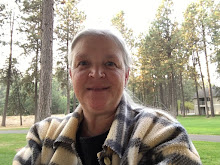
The long hot days of summer are ahead of us and after toiling in the sun we deserve the time to enjoy the fruits of our labor.
People garden for various reasons:
- To put food on the table, and in the pantry for winter.
- For cut flower bouquets to adorn their homes with color.
- For the scent of the freshly harvested herbs and vegetables or fragrant flowers.
The scented garden is one worthy of our hard work.
Here is a list of fragrant blooms that wait til evening to reward you for your hard work:
- Nicotianas (alata and sylvestris, which are both white, are the most fragrant)
- Brugmansia and datura (scentless in the daytime, they turn it on after dark)
- Moonflower (a vine that thrives in heat)
- Trumpet and Oriental lilies (plant as many different varieties as you can justify)
- Acidanthera (peacock orchids need to be dug like glads, but are totally worth it).
- Night phlox or Dame's Rocket (Hesperis matronalis is an easy annual from seed)
- Stock (don't let the name fool you, this is a beautiful annual with a carnation-like fragrance).
- Dianthus (not all are fragrant, but many of them are)
- Tuberose (a tender bulb that needs to be dug and stored indoors)
- Mockorange (Philadelphus coronarius, flowers are shortlived but fabulous)
- Alyssum (more fragrant in the sun, but still quite fragrant after dark)
- Hostas (some varieties have very fragrant flowers in late summer)
- Petunias (seek out fragrant varieties— use your own nose to evaluate them)
- Heliotrope (both the purple and the white varieties have a vanilla fragrance)
The garden can become a whole new world at night, especially if you accent your beds with lighting or special features.
Do yourself a favor and create outdoor benches and seating areas where you can sit and relax and breath in the essence of your hard work.
With real glass shades and verdigris steel “stems," these Bluebell Path Lights are beautiful garden accents even in the daytime. When evening falls, they provide 6 to 8 hours of illumination.
Solar Bluebells, Set of 4

Inside each of these ornaments is a sprinkling of "fairy dust", a special phosphorescent paint that absorbs sunlight by day, and glows by night adding magic and mystery to your landscape.
Fairydust Balls with Stakes, Set of 3


